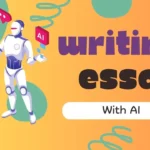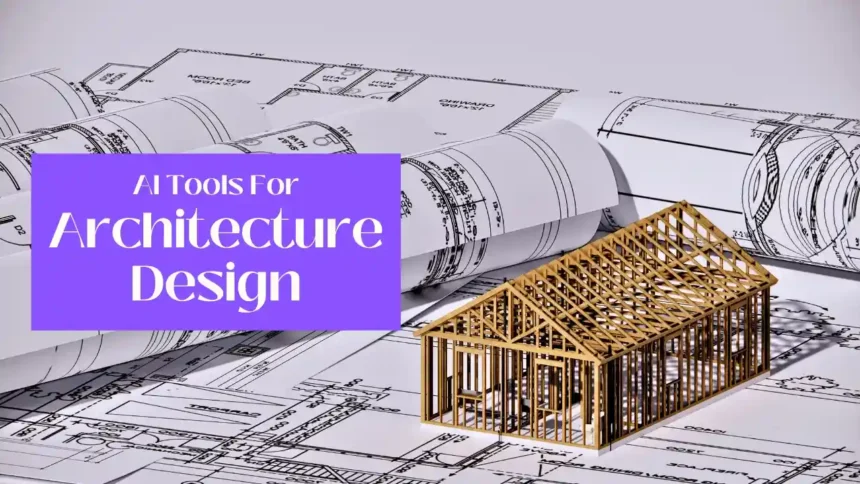In the world of architecture, technology is changing the game. Now, there are special tools powered by artificial intelligence (AI) that help architects in designing.
These AI tool for architecture design are like helpful assistants that make the process easier and more exciting.
This article presents the top nine AI tools for architecture design, showcasing how they bring innovation and efficiency to the field.
Why You Need AI Tool For Architecture Design
Architects benefit from AI Tool For Architecture Design for various reasons. In the pre-design stage, these tools streamline the planning process, reducing weeks or months of work to mere hours.
Urban planning gains an advantage as AI enables early building designs, quick road and city block creation, and real-time updates on factors like traffic flow.
In construction, AI oversees worksites, identifying problems and ensuring safety by sending alerts to supervisors, ultimately enhancing efficiency and worker morale. Embracing AI becomes essential for faster, smarter architecture design.
9 AI Tool For Architecture Design
Following are the 9 Best AI tool for architecture design, which a comparison table at the end for your convenience:
Maket AI
Maket AI is a pioneering force in architecture, leveraging generative AI to reshape planning. With a focus on endless creativity, it swiftly generates innovative Architecture design and guides through zoning intricacies. Maket AI is driving a transformative shift, propelling architectural projects into new realms of possibility.
| Merits | Demerits |
|---|---|
| 1. Endless Design Ideas | 1. Learning Curve for New Users |
| 2. Swift Floorplan Creation | 2. Limited Real-world Context |
| 3. Zoning Code Assistance | 3. Dependency on AI Reliability |
| 4. Enhanced Creativity | 4. Potential Design Repetition |
| 5. Accelerated Innovation | 5. Less Human Intuition |
Features Of Maket AI
- Endless Design Possibilities
- Swift Floorplan Generation
- Zoning Code Navigation
- Creative Freedom Unleashed
- Innovation Accelerated
Cove.tool
Cove.tool is innovative software reshaping the AEC industry’s data use, automation, and cost efficiency. It’s dedicated to merging sustainable building practices and Architecture design with user-friendly design, effectively lowering carbon emissions industry-wide in the fight against climate change.
| Merits | Demerits |
|---|---|
| 1. Sustainable Design Focus | 1. Initial Learning Curve |
| 2. Data-Driven Efficiency | 2. Dependence on Data Quality |
| 3. Cost Optimization | 3. Complex Projects May Challenge Tool |
| 4. User-Friendly Interface | 4. Limited Creative Control |
| 5. Industry-wide Emission Reduction | 5. May Require Regular Updates |
Features Of Cove.tool
- Climate-conscious Design
- Data-driven Efficiency
- Automated Cost Optimization
- User-friendly Sustainability
- Industry-wide Emission Reduction
Archistar
Archistar combines parametric and generative design with top property data from Australia, enabling property professionals to discover, evaluate, and design profitable development sites nationwide. It’s a tech-driven solution revolutionizing property development and Architecture Design.
| Merits | Demerits |
|---|---|
| 1. Rapid Design Exploration | 1. Learning Curve for New Users |
| 2. Detailed Property Insights | 2. May Lack Personalized Precision |
| 3. Efficient Concept Generation | 3. Limited Real-world Adaptability |
| 4. Streamlined Planning Process | 4. Reliance on Software Reliability |
| 5. Enhanced Architectural Solutions | 5. Less Human Intuition |
Features Of Archistar
- Rapid Design Exploration
- Detailed Property Insights
- Time-saving Concept Generation
- Streamlined Planning Process
- Enhanced Architectural Solutions
Qbiq
Qbiq is an AI-driven tool aiding architects in refining building Architecture Design. It generates various options, gathers stakeholder input, and guarantees designs fulfill functional needs. It’s a solution empowering architects to enhance their projects through smart design optimization.
| Merits | Demerits |
|---|---|
| 1. Modular Design Innovation | 1. Limited Complexity Handling |
| 2. Customizable Architectural Solutions | 2. Initial Learning Curve |
| 3. Efficient Space Utilization | 3. Possible Integration Issues |
| 4. Sustainable Building Approach | 4. May Lack Design Flexibility |
| 5. Versatile Construction Systems | 5. Software Updates Dependency |
Features Of Qbiq
- Modular Design Innovation
- Customizable Architectural Solutions
- Efficient Space Utilization
- Sustainable Building Approach
- Versatile Construction Systems
Hypar
Hypar is an AI-driven tool assisting architects in designing parametric structures. It enables the creation of intricate geometries that balance structural integrity and visual appeal effectively.
| Merits | Demerits |
|---|---|
| 1. Parametric Design Excellence | 1. Learning Curve for New Users |
| 2. Real-time Collaboration | 2. Dependency on Stable Internet |
| 3. Automated Design Iterations | 3. Potential Technical Glitches |
| 4. Seamless BIM Integration | 4. Limited Offline Functionality |
| 5. Data-driven Decision Support | 5. Possible Design Repetition |
Features Of Hypar
- Parametric Design Excellence
- Real-time Collaboration
- Automated Design Iterations
- Seamless BIM Integration
- Data-driven Decision Support
GetFloorPlan
GetFloorPlan is an AI-driven tool aiding architects in transforming 2D sketches into detailed floorplans swiftly. It offers a convenient way to generate precise floorplans suitable for presentations, marketing materials, and construction purposes.
| Merits | Demerits |
|---|---|
| 1. Easy Floorplan Creation | 1. Limited Advanced Features |
| 2. Quick Room Layouts | 2. Complex Designs May Struggle |
| 3. User-friendly Interface | 3. Software Learning Curve |
| 4. Interactive Design Experience | 4. Dependence on Internet |
| 5. Instant Design Visualization | 5. Potential Accuracy Issues |
Features Of GetFloorPlan
- Easy Floorplan Creation
- Quick Room Layouts
- User-friendly Interface
- Interactive Design Experience
- Instant Design Visualization
TestFit
TestFit is an AI-driven tool aiding architects in envisioning furniture placement within a room. It ensures furniture is appropriately sized, styled, and arranged for functional and appealing spaces. TestFit transforms the way architects create harmonious and practical interiors.
| Merits | Demerits |
|---|---|
| 1. Rapid Site Analysis | 1. Initial Learning Curve |
| 2. Efficient Massing Studies | 2. Complex Projects May Challenge Tool |
| 3. Data-informed Design | 3. Possible Inaccuracies |
| 4. Customizable Scenarios | 4. Limited Real-world Context |
| 5. Streamlined Workflow | 5. Regular Updates Dependency |
Features Of TestFit
- Rapid Site Analysis
- Efficient Massing Studies
- Data-informed Design
- Customizable Development Scenarios
- Streamlined Planning Workflow
Morpholio Trace
Morpholio Trace is an AI-driven tool designed for architects to trace existing drawings and sketches. It offers a swift and precise way to create accurate CAD drawings, simplifying the process effectively.
| Merits | Demerits |
|---|---|
| 1. Dynamic Sketching Tool | 1. Learning Curve for New Users |
| 2. Architectural Collaboration | 2. Possible Sync Issues |
| 3. Real-time Design Feedback | 3. Limited Complex Functionality |
| 4. Easy Concept Visualization | 4. Potential Technical Glitches |
| 5. Seamless Digital Workflow | 5. Dependency on Stable Devices |
Features Of Morpholio Trace
- Dynamic Sketching Tool
- Architectural Drawing Collaboration
- Real-time Design Feedback
- Concept Visualization Made Easy
- Seamless Digital Design Workflow
DALL-E 2
DALL-E 2, an OpenAI creation, generates images from text descriptions. It’s used for realistic architectural renderings and inspiring new design concepts, converting words into visual artistry effectively.
| Merits | Demerits |
|---|---|
| 1. Text-to-Image Transformation | 1. Limited Context Understanding |
| 2. Creative Visual Interpretation | 2. Potential Inaccuracies |
| 3. Architectural Concept Illustration | 3. Dependency on Input Quality |
| 4. Design Idea Generation | 4. Possible Lack of Detail |
| 5. Language-Image Fusion | 5. May Not Capture Complexity |
Features Of DALL-E 2
- Text-to-Image Transformation
- Creative Visual Interpretation
- Architectural Concept Illustration
- Design Idea Generation
- Seamless Language-Image Fusion
AI Tool For Architecture Design – Comparision Table
| Tool | Key Focus | Application Area | Ease of Use | Flexibility | Data Utilization |
|---|---|---|---|---|---|
| Maket AI | Creative Design Exploration | Architecture Planning | Easy | Moderate | Moderate |
| Cove.tool | Sustainable Design Solutions | Building Performance | Moderate | High | High |
| Archistar | Rapid Concept Generation | Architectural Innovation | Easy | High | Moderate |
| Qbiq | Modular Architectural Design | Customizable Structures | Moderate | High | Moderate |
| Hypar | Parametric Design Excellence | Real-time Collaboration | Moderate | High | High |
| GetFloorPlan | Easy Floorplan Visualization | Design Visualization | Easy | Low | Low |
| TestFit | Rapid Site Analysis | Development Planning | Moderate | High | High |
| Morpholio Trace | Dynamic Architectural Sketching | Digital Design Collaboration | Easy | High | Moderate |
| DALL-E 2 | Text-to-Image Generation | Visual Content Creation | Easy | Low | Moderate |
FAQ
What is the AI tool for architecture and interior design?
Imagine having a clever computer buddy for architects and interior designers – that’s an AI tool for architecture and interior design! It’s like having a digital design wizard that makes buildings and indoor spaces look awesome without needing a magic wand. It’s technology giving a helping hand to create spaces that’ll make you say, “Wow!”
What is the future of AI in architecture?
The future of AI in architecture is undeniably thrilling. It holds the promise of smarter designs that dance with creativity and energy efficiency. Imagine the joy of seamless collaboration between architects and AI, conjuring structures that not only awe us but also care for the planet.
How is AI used in architecture?
AI transforms architecture by boosting creativity and efficiency. It generates ideas, optimizes designs, and monitors construction progress. Architects benefit from quick data analysis, adaptive designs, and safer construction. From start to finish, AI is a versatile partner that enhances architectural innovation and sustainability.
Can AI build 3D models?
Yes, AI can indeed build 3D models. With its smart algorithms and learning capabilities, AI can analyze data and generate intricate 3D models of architectural designs. This ability streamlines the design process and allows architects to visualize their concepts in a more detailed and accurate manner.
Conclusion
Artificial intelligence is transforming how architects work. These AI tool for architecture design are game-changers. They let architects be more creative and solve challenges. From Maket AI’s creativity to DALL-E 2’s image-making, these tools show the future of architecture is bright with AI.









